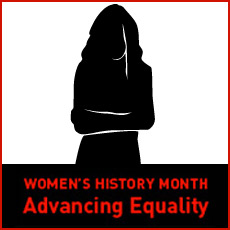
I’ve been stopped in a restaurant. Stopped in a bar, in a department store, in the airport, in a state park, and in at least three continents. Even stopped in the ACLU. Most times, it’s just a perplexed stare, a glance at the gender symbol on the bathroom door, followed by a, “I think you’re in the wrong place.” Other times, it’s more aggressive, an angry accusation I’ve purposefully invaded the women’s restroom, anger that doesn’t always subside even after I’ve politely explained that I am a female too.

Because of these reactions, for me, going to the restroom in a public place is an experience filled with trepidation, dread, and embarrassment. It is an experience to be avoided if at all possible, even if it means getting into an argument with my wife for wanting to leave an event we paid a lot of money to attend just so I can use the bathroom in the privacy of our home. Times too many to count, I’ve found myself rushing home desperately, physically in pain, just because I decided to hold it rather than risk a crowded women’s room. The occasions when I just can’t wait, when I really have to go, I steel myself, pray that I wore a tight enough shirt that day, thrust my chest out as much I can, and walk in and hope for the best. It’s an exhausting experience, and one that is tinged with not an insignificant amount of shame.
I don’t necessarily fault the reactions by other women to my appearance. After all, I have what some might describe as a “buzz cut” and most of my clothes are labeled men’s extra small, not women’s medium. I do little to nothing to “feminize” myself to the outward world. Indeed, one (female) friend once asked, “Well, why do you get upset when you’re mistaken for a boy when you’re trying to look like a boy?”
But I guess that’s the point — I’m not trying to look like a boy, any more than I’m trying not to look like a girl. I’m just trying to look like myself. And even though there remains the very real and justifiable fear of assault by men, it is unlikely that this fear is the sole driving force behind the hostility I encounter from the women who seem to be really pissed that I look the way I do.
Over 20 years ago, in Price Waterhouse v. Hopkins, the Supreme Court determined that Ann Hopkins had suffered from sex discrimination when her male supervisors failed to promote her because they found her “too aggressive” and “unduly harsh.” Along with the advice to act more like a woman, her employer had also advised her that if she wanted to succeed, she should “wear makeup, have her hair styled, wear jewelry,” and otherwise change her appearance to look more like a woman.
For me, my experience — which is not uncommon for gender nonconforming and transgender folks — is a daily reminder of many forms of sexism that persist in our society today, despite the enormous strides in the law since Price Waterhouse. Stereotypes about what a woman should look like — like stereotypes about how a woman should behave — remain a stubborn part of our culture. So ingrained that gender transgression is not always policed by men, but sometimes by women too.
For Women’s History Month, I would like to honor Ann Hopkins for bringing her seminal case protecting the rights of all women and men to be free from sex stereotyping discrimination. I’d also like to make a personal plea to my fellow women. Next time you see a person in the restroom who doesn’t appear at first glance to be female, please just look again before you question or accuse him. You might discover that it’s just me.
We’re holding a month-long blog symposium on women’s rights for Women’s History Month. See all the blog posts here, and learn more about women’s rights: Subscribe to our newsletter, follow us on Twitter, and like us on Facebook.

